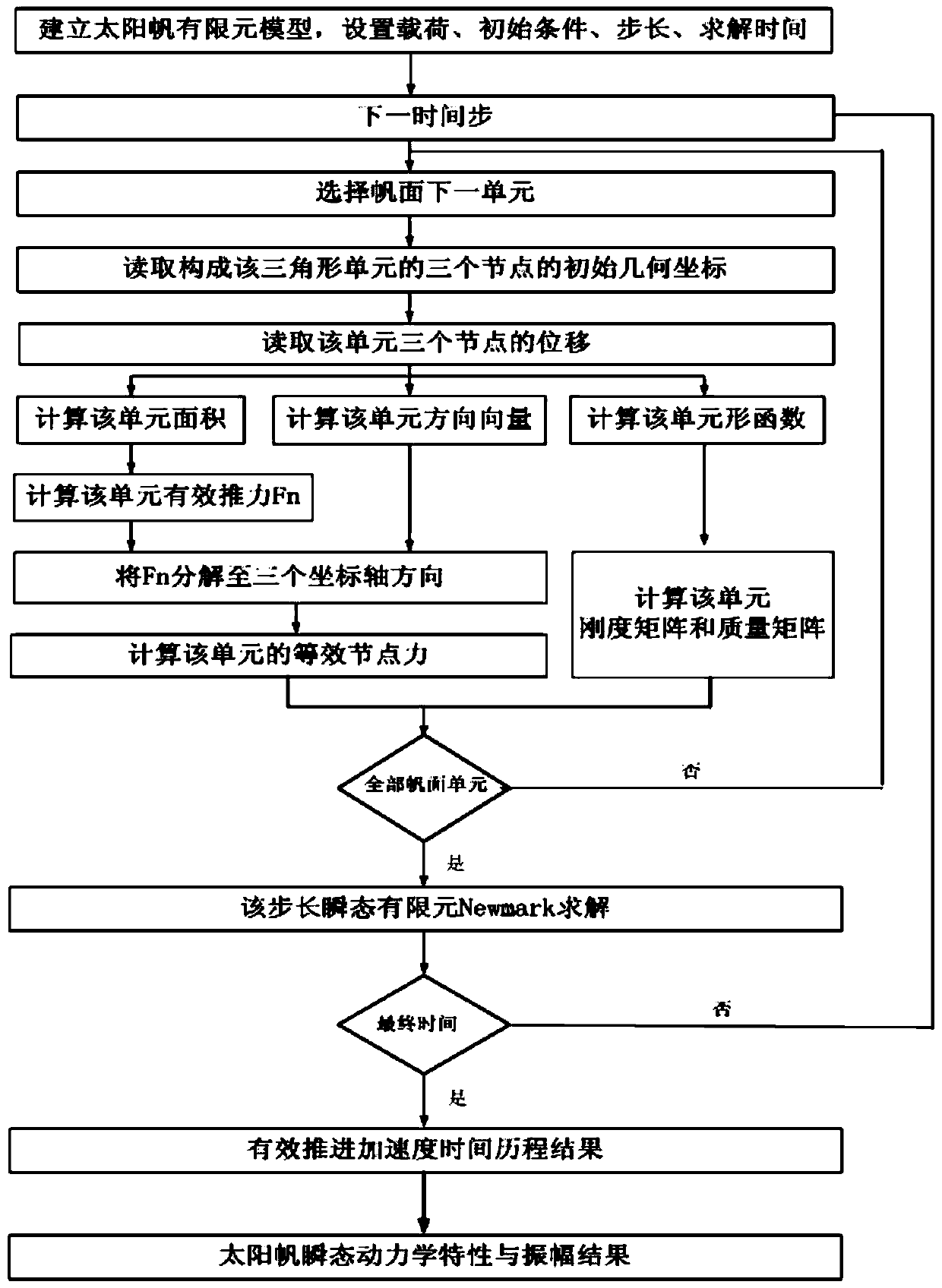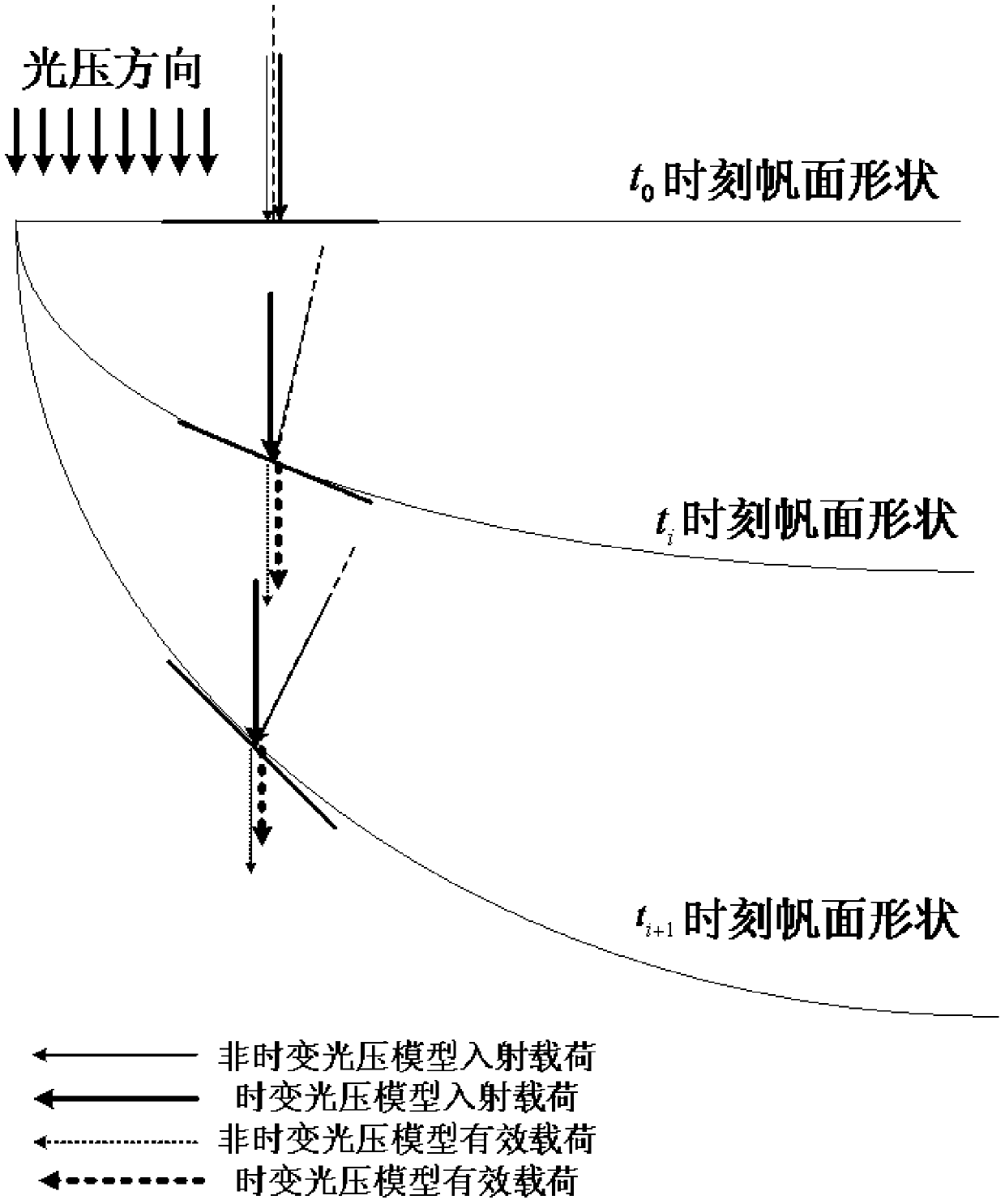A Transient Dynamics Analysis Method for Solar Sails to Determine Effective Propulsion Acceleration Breakdown
A technology of dynamic analysis and acceleration, applied in the field of transient dynamic analysis of solar sails, can solve problems such as large calculation errors of non-time-varying light pressure models, failure to consider time-varying effects of light pressure, missing multiplication, etc.
- Summary
- Abstract
- Description
- Claims
- Application Information
AI Technical Summary
Problems solved by technology
Method used
Image
Examples
Embodiment
[0067] Example: Static finite element simulation analysis of 160m solar sail structure
[0068] 1) Establish the finite element model of the solar sail, as shown in 4, mainly including: respectively establish the model of the one-dimensional beam element of the support arm and the two-dimensional triangular shell element of the sail surface, set the side length of the square sail to 160m, and set the mass of the central body to m center =100kg, terminal weight m vertex =12.4kg, center body moment of inertia J center =0kg·m 2 , the outer diameter of the support arm D = 300mm, the wall thickness b = 0.1mm, the thickness of the sail surface h = 1.5μm; set the material property E of the support arm beam =210GPa, γ beam =0.33, ρ beam =848kg / m 3 , material property E of the sail surface film sail =2.5GPa, γ sail =0.34, ρ sail =1420kg / m 3 ;Set the direction of prestress as the two normal stresses in the sail surface, the size is 50000Pa; set the initial solution time t 0 = ...
PUM
 Login to View More
Login to View More Abstract
Description
Claims
Application Information
 Login to View More
Login to View More - R&D
- Intellectual Property
- Life Sciences
- Materials
- Tech Scout
- Unparalleled Data Quality
- Higher Quality Content
- 60% Fewer Hallucinations
Browse by: Latest US Patents, China's latest patents, Technical Efficacy Thesaurus, Application Domain, Technology Topic, Popular Technical Reports.
© 2025 PatSnap. All rights reserved.Legal|Privacy policy|Modern Slavery Act Transparency Statement|Sitemap|About US| Contact US: help@patsnap.com



